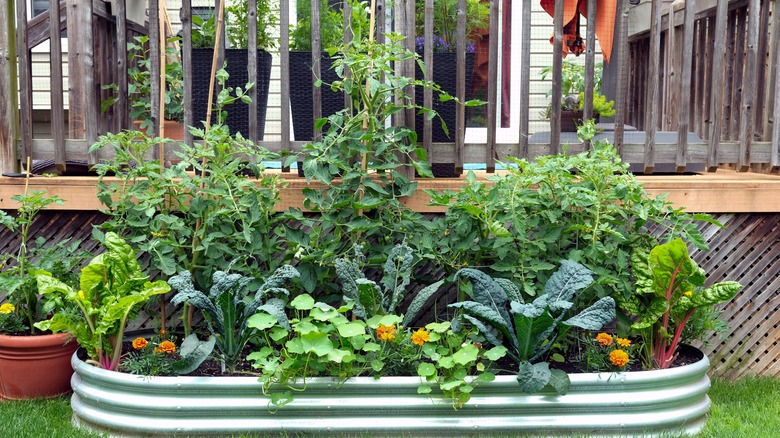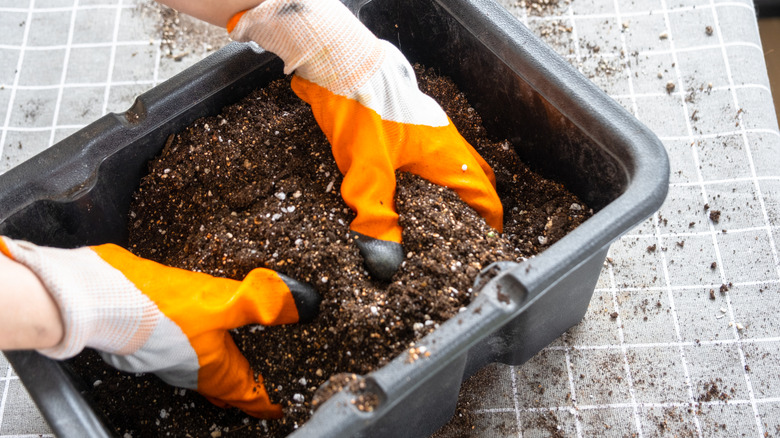The Best Type Of Soil To Use For A Thriving Container Garden
There are many benefits of growing a container garden. They are ideal for gardeners with unique growing conditions, gardening in tight spaces, and adding a decorative touch to any location around the home. Growing in containers is a bit different than growing in the ground. For starters, one of the biggest mistakes container gardeners make is filling containers with the same soil that they find in their yard. The best soil for thriving container gardens isn't soil at all!
Garden soil is intended for conventional gardens in the ground, and it can contain a blend of topsoil and organic matter. These soils are not to be used in containers because they quickly become compacted. Soil that is compacted leads to poor growth and root rot. Garden soils can also contain weed seeds if it is not sterilized. Soilless mixes or potting mixes are made to be used for container gardening. These mixes are designed to be lightweight, retain moisture, and resist becoming compacted.
A good soilless mix contains a variety of ingredients. Still, all contain some form of an organic ingredient like peatmoss or compost, a moisture-retaining ingredient like perlite or vermiculite, and sand to help with drainage. Some also include extra ingredients like water-absorbing crystals meant to hold water and slowly release it as the soilless mix dries out. This is meant to help keep the mix moist between watering. The safety and efficacy of these crystals are still up for debate, however.
How to make your own soilless mix
If you are the DIY type or simply need a large amount of soilless mix, you can make it yourself. All growing medium has a few main functions. It has to supply the roots of your plants with nutrients, air, and water while also providing enough room for the plant roots to grow. It also has to be weighted enough to keep the plant standing upright. Overall, you want a lightweight mix that drains well, holds on to water and nutrients, and is free of weed seeds and disease.
Your particular mix should reflect what you are going to be planting, but a basic recipe will start with peat moss. Adding equal parts sand and vermiculite creates a light mix that won't compact as easily in your containers. This basic mixture can be adjusted to create a loose medium that drains well by mixing and adding small portions of each ingredient until you get the texture you are looking for. Small amounts of fertilizer will need to be added to this mixture. Slow-release fertilizers added at the rate recommended on the label will provide nutrients as you water, throughout the growing season.
Moisten your mixture before filling pots. Container gardens need more water than you may realize. If a soilless mix dries out too much, it becomes hydrophobic, and water will not be absorbed. The solution is to soak the pot until the mix is moist again and do not allow your containers to completely dry out again.

